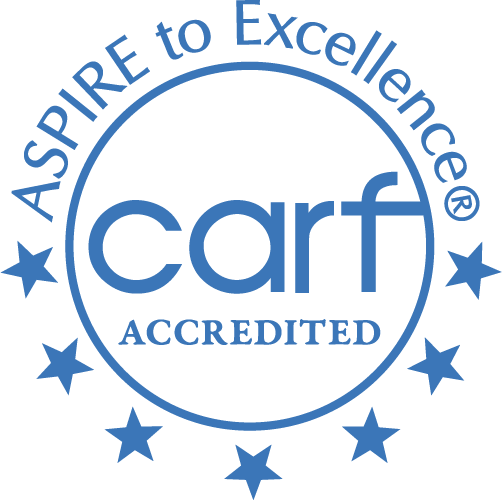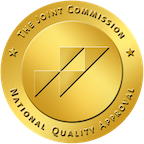Skip To Rehab Listing
Alcohol and Drug Rehab Settings and Approaches in Bartonsville, PA.
Drug and alcohol abuse affects individuals of all ages, genders, and walks of life. The addiction treatment facilities and resources, such as inpatient rehab programs, long term addiction treatment centers, short term rehab programs, outpatient detox facilities, outpatient substance abuse counseling, are designed to offer high-quality care to anyone who has a problem with substance abuse, no matter their personal circumstance.
Substance abuse treatment facilities in the Bartonsville area are not all the same. They offer a variety of methods, like contingency management/motivational incentive, brief intervention approach, 12-step facilitation approach, relapse prevention, group therapy, substance abuse counseling approach, that allow patients to confront their alcohol and drug dependency in the way that is most effective for them.
Special Services for Substance Abuse Treatment
Even with the pervasiveness of addiction, each person who struggles with drug and alcohol abuse issues has their own unique circumstances that need an individualized strategy. That is why the rehabilitation programs in Bartonsville offer several special resources like persons with serious mental illness, residential beds for client's children, persons with eating disorders, active duty military, persons who have experienced sexual abuse, persons with post-traumatic stress disorder.
Accepted Treatment Payment Options
Patients and their loved ones should not defer recovery because of worries about expense. Treatment centers provide many alternatives for payment, like the following: private health insurance, private pay, payment assistance, sliding fee scale, state corrections or juvenile justice funds, state education funds. Substance abuse treatment centers can guide patients and their loved ones toward the payment options that will put rehab within reach.
People who struggle with alcohol and drug dependency should not wait to access the various services available in Bartonsville, Pennsylvania.
Commonly Asked Questions about Addiction and Treatment
Facts about fentanyl
Fentanyl is a powerful synthetic opioid analgesic that has garnered significant attention in recent years due to its role in the opioid crisis. Here are some essential facts about fentanyl:
Potency: Fentanyl is estimated to be 50 to 100 times more potent than morphine and 25 to 50 times more potent than heroin. Due to its high potency, it is prescribed in micrograms (mcg) rather than the milligrams (mg) typically used for other opioids.
Medical use: Fentanyl is primarily used in medical settings to manage severe pain, such as chronic pain or breakthrough pain in cancer patients. It is also used as an anesthetic during surgical procedures. Fentanyl is available in various forms, including transdermal patches, lozenges, tablets, and injections.
Illicit use: Fentanyl has become a significant concern in the illicit drug market due to its potency and relatively low production cost. Illegal fentanyl is often mixed with other drugs, such as heroin, cocaine, or counterfeit prescription pills, increasing the risk of overdose for unsuspecting users.
Overdose risk: Fentanyl's potency makes it particularly dangerous, as even a small amount can cause an overdose. Signs of fentanyl overdose include slow or shallow breathing, unresponsiveness, pinpoint pupils, cold and clammy skin, and loss of consciousness. Fentanyl overdoses can be fatal if not promptly treated.
Naloxone: Naloxone, also known as Narcan, is an opioid antagonist that can rapidly reverse the effects of a fentanyl overdose by displacing the drug from the opioid receptors in the brain. Due to fentanyl's potency, multiple doses of naloxone may be necessary to reverse an overdose effectively.
Fentanyl analogs: There are numerous fentanyl analogs or derivatives, such as carfentanil, acetylfentanyl, and furanylfentanyl. These analogs can have varying potencies, often significantly stronger than fentanyl itself, which can further increase the risk of overdose and fatalities.
Legal classification: Fentanyl is a Schedule II controlled substance in the United States, indicating that it has a high potential for abuse and dependence but also has accepted medical uses. Illicit fentanyl and its analogs are often classified as Schedule I substances, indicating that they have no accepted medical use and a high potential for abuse.
Addiction and dependence: Fentanyl, like other opioids, carries a risk of addiction and physical dependence. Chronic use can lead to tolerance, requiring higher doses to achieve the same effect, and withdrawal symptoms if usage is reduced or stopped abruptly.
How do I know if I have an addiction problem?
Recognizing whether you have an addiction problem involves self-reflection and a honest assessment of your behaviors, thoughts, and emotions related to substance use or compulsive behaviors. Addiction is characterized by an inability to control or abstain from a substance or behavior despite negative consequences and a preoccupation with the addictive substance or behavior. Here are some signs and symptoms that may indicate an addiction problem:
- Loss of control: You may find it difficult to stop or moderate your substance use or behavior, even when you want to or have tried multiple times.
- Continued use despite negative consequences: You continue to engage in the addictive behavior despite experiencing negative effects on your health, relationships, work, or other aspects of your life.
- Preoccupation: You spend a significant amount of time thinking about, obtaining, using, or recovering from the substance or behavior.
- Tolerance: You may need increasing amounts of the substance or more frequent engagement in the behavior to achieve the same desired effect, indicating that your body has become accustomed to it.
- Withdrawal: When you stop using the substance or engaging in the behavior, you experience physical or psychological symptoms, such as anxiety, irritability, nausea, or insomnia.
- Neglecting responsibilities: You may find yourself neglecting personal, work, or family obligations due to your preoccupation with the substance or behavior.
- Social isolation: You may withdraw from social activities or relationships that were once important to you, often to hide your addiction or because the addiction has taken priority.
- Risk-taking behavior: You may engage in risky activities, such as driving under the influence, sharing needles, or engaging in unprotected sex, while using the substance or engaging in the addictive behavior.
- Denial or minimization: You may downplay the severity of your addiction or refuse to acknowledge that there is a problem, despite concerns expressed by friends, family, or professionals.
If you recognize any of these signs and symptoms in your own life, it may be an indication that you have an addiction problem. It is important to seek help from a healthcare professional, addiction counselor, or support group to discuss your concerns and explore available treatment options. Remember, addiction is a complex and chronic condition, but recovery is possible with the appropriate support and intervention.
Is substance abuse higher in the lgbtq+ community?
Yes, studies have indicated that rates of substance use and substance use disorders are indeed higher in the LGBTQ+ (lesbian, gay, bisexual, transgender, queer, and others) community compared to the general population. This disparity is believed to be related to a variety of factors, including the stress and stigma associated with identifying as LGBTQ+.
Here's a closer look at some of the related factors and statistics:
- Minority Stress: Minority stress refers to the chronic stress faced by members of a marginalized group, such as the LGBTQ+ community. This includes dealing with prejudice, societal stigma, discrimination, and the process of coming out. This added stress can increase the risk of substance use as a coping mechanism.
- Mental Health: There are higher rates of mental health disorders, such as depression and anxiety, among LGBTQ+ individuals, often as a result of minority stress. Mental health disorders are a known risk factor for substance use and substance use disorders.
- Social Environment: Substance use is often more normalized in some LGBTQ+ social settings, such as bars and clubs, which can increase the likelihood of substance use and addiction.
- Access to Care: LGBTQ+ individuals may face barriers to receiving substance use treatment, such as discrimination, lack of LGBTQ+ inclusive treatment programs, and fear of stigma.
According to the Substance Abuse and Mental Health Services Administration (SAMHSA), adults who identify as lesbian, gay, or bisexual were more than twice as likely as heterosexual adults to have used illicit drugs in the past year. Transgender individuals also experience higher rates of substance use and substance use disorders compared to their cisgender peers.
It is important to note that while substance use is a significant issue within the LGBTQ+ community, not all individuals within this community use substances or struggle with substance use disorders. A comprehensive, culturally competent approach is needed to address substance use in the LGBTQ+ community, which includes providing LGBTQ+ inclusive prevention and treatment programs, addressing the underlying issues like discrimination and stigma, and improving access to mental health care.














